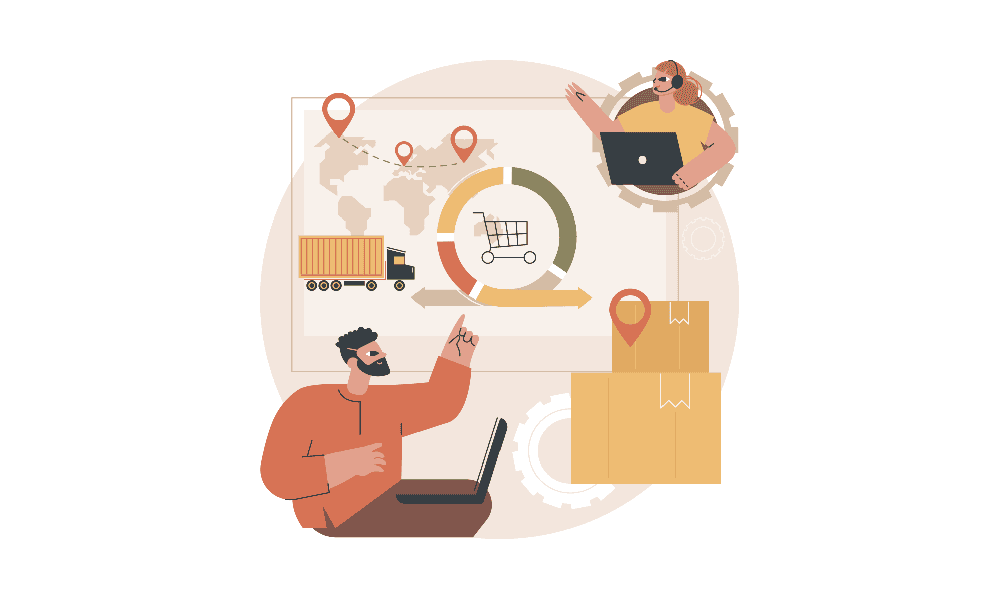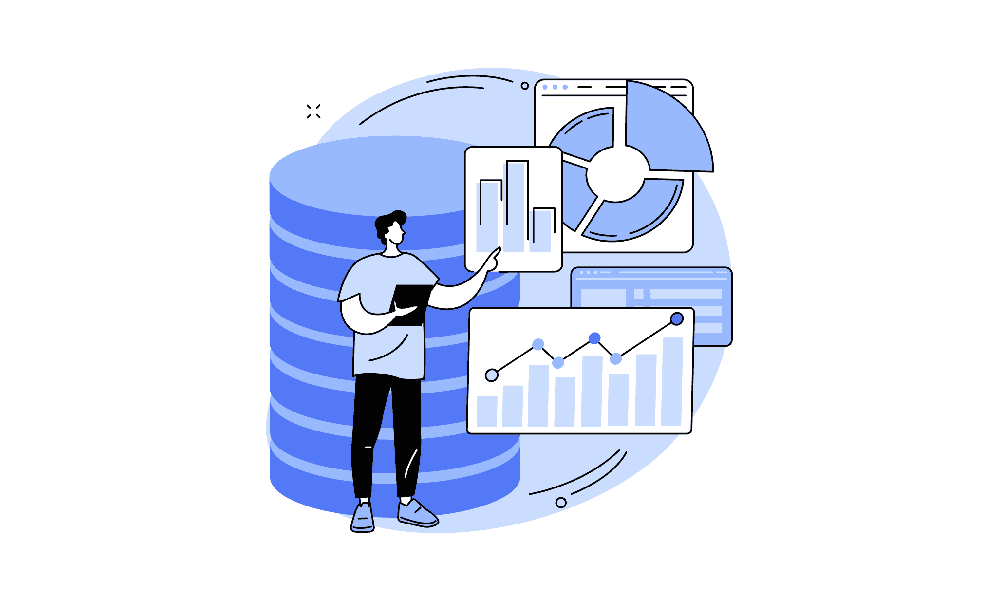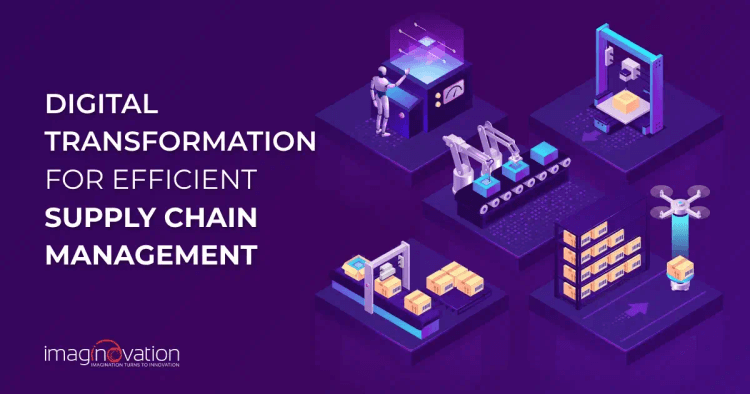Technology has transformed virtually every area of the business world, so it's about time supply chains caught up with their digital counterparts.
While many are aware of the importance of digital transformation in the supply chain, they aren't sure how to achieve it.
Some even dismiss digital transformation as mere hype, questioning its impact on supply chain efficiency.
For some who embarked on the path to becoming a digital supply chain, the transition was more difficult than expected.
Despite this, research tells us that a whopping 70 percent of business leaders have already begun their journey toward transforming their supply chains into digital ones.
This indicates a widespread recognition of the benefits that digitalization brings to the table.
But what does digital transformation actually mean for a supply chain? And how will it affect your business?
In this blog, we will explain what makes a supply chain 'digital' and how transformation can be done to enhance its efficiency.
Let's go!
The Shift from Traditional to Digital Supply Chains
In recent years, businesses worldwide have witnessed a significant transformation in the way supply chains operate. The traditional, manual processes that once dominated the industry are rapidly giving way to the era of digital supply chains.
This shift is driven by many factors, such as tech advancements and the pressing need for efficiency and visibility.
So, let's compare the traditional supply chain with the digital supply chain and understand how these two approaches differ in managing the flow of goods and services.
Traditional supply chains are primarily static in nature and follow fixed processes. They involve predetermined steps without offering room for on-the-go adjustments.
Moreover, in a traditional supply chain, decisions regarding inventory management, production, or distribution are often made based on historical data or long-term projections. This approach assumes a stable environment with predictable demand patterns.
But here's the thing: in today's fast-paced business world, market conditions can shift in the blink of an eye, leaving traditional supply chains struggling to keep up. They're just not designed to handle sudden disruptions.
Another downside of traditional supply chains is their lack of real-time visibility. The information takes a while to flow, and it's often fragmented. This can slow decision-making and make coordinating between suppliers, manufacturers, distributors, and customers tough.
On the flip side, digital supply chains are all about agility and adaptability. They use technology, automation, and real-time data to make smart decisions, respond quickly to market changes, and optimize business operations.
In digital supply chains, information from different technology systems is unified, making coordinating everything easier. But in traditional supply chains, the systems often work separately, which creates challenges.
When it comes to spotting problems and predicting risks, traditional supply chains require a lot of manual effort. It's like doing a lot of work to figure out what might go wrong.
But with digital supply chain transformation, companies can use shared data on quality and control to anticipate issues and take precautions ahead of time. It's all about being proactive and preventing problems before they even happen.
Going digital empowers organizations to overcome the limitations of traditional supply chains and enjoy the benefits of being agile, responsive, and collaborative.
Also Read: Developing Yard Management Systems for Transportation Businesses
Understanding the Importance of Digital Transformation for Supply Chains
So digital supply chains have something that sets them apart—up-to-date and real-time data. But wait! Supply chain digital transformation brings many other benefits too. Let's explore them together.

1. Organizational flexibility
Digital transformation of your supply chain can give you more freedom to choose how centralized or specialized you want your operations to be. When certain functions are centralized, you gain a significant benefit: you achieve higher value by improving quality and productivity.
2. Enhanced stakeholder coordination & collaboration
Digital transformation also means using online portals, mobile apps, and other collaboration platforms to communicate and work together. With these tools, you'll find it easy to share information, provide feedback, coordinate, and collaborate with other stakeholders quickly and efficiently. This collaborative approach reduces information gaps and improves overall supply chain performance.
3. Enhanced decision-making
With a digital supply chain, you can use real-time data to make well-informed choices. For example, by accessing real-time data on inventory levels across multiple locations, you can make informed choices about restocking, allocation, or order fulfillment. Advanced analytics capabilities of the digital supply chain also help you predict and optimize operations.
4. Enhanced efficiency
Digitization helps businesses streamline processes, thereby boosting efficiency and operational productivity. For instance, using picking software or conveyor automation in warehouses can make processes more efficient, saving time and increasing productivity.
5. Faster innovation
Digital transformation processes have one main goal: innovation. Adopting digital processes in your supply chain can enhance your business models and forge stronger relationships with suppliers and customers.
6. Reduced costs
A digital supply chain offers real-time information on status, performance, and other requirements. This data assists in optimizing various supply chain processes like raw material flows, operational logistics, inventory levels, forecasting, and even resource planning. Such improvements directly contribute to better cash flow and cost reductions.
Roadmap to a Digital Supply Chain
Every supply chain digitization project is unique. And so are its specifics, processes, and requirements. While it's essential to build transformation strategies tailored to your requirements, there are common steps that lay the foundation for driving supply chain digitization.
So, here's the transformation roadmap you can follow.
1. Assess the current status of your supply chain
When starting the digitalization process, assessing your current supply chain is important. This evaluation includes identifying your supply chain's strengths, weaknesses, opportunities, and transformation potential. This step is crucial as it helps you recognize existing issues, risks, and potential complications. With this info by your side, you can proactively set actionable goals, increase the chances of success, and minimize confusion.
At this step, you should analyze the existing supply chain processes, key performance indicators (KPIs), dependencies with other business processes, and other challenges. This assessment helps determine the extent of digital disruption needed and prioritize areas within the supply chain for change.
2. Establish a clear vision

Transitioning from a traditional supply chain to a fully integrated digital one can be complex. To ensure a successful transformation, developing a clear strategy that aligns with your business goals is crucial. These goals may involve better decision-making, automated processes, and improved supply chain visibility to support your business objectives.
Figure out what your long-term and short-term expectations are from this transformation.
- Evaluate Existing Resources and Systems: Assess what capabilities are needed to accomplish your transformation goals and identify any existing gaps.
- Legacy Systems: Align your existing systems with the new goals by ensuring they use appropriate technology. Check if the technology you currently employ aligns with your business objectives. Identify digital solutions and legacy systems that can aid in achieving your desired business outcomes.
- Collection and Analysis of Data: Check your existing systems' data generation, collection, and analysis capabilities. Assess if the data can be readily accessed to derive actionable insights.
- Workforce Competencies: Assess if your team possesses the right skills to work with and adapt to the new digitized business model.
3. Unify your data and processes
To begin, start identifying all the systems and sources where data relevant to your supply chain is generated or stored. This can include ERP systems, inventory management systems, logistics solutions, customer databases, etc. Take a closer look at the supply chain data your company is collecting and consider how it can be improved. You can then take steps to ensure that all this data follows a consistent format and structure.
Going forward, select a suitable platform or technology solution that facilitates the integration and consolidation of data. This could involve using middleware, APIs, data connectors, etc., that support data integration.
The primary goal of this step is to enhance visibility for all individuals and processes throughout the entire supply chain network.
For example, imagine your company receives customer orders, and you have a separate system to manage those orders. On the other hand, you also have a system to manage your warehouses where the orders are fulfilled. By unifying the data and processes of these two systems, you will ensure they work together seamlessly.
4. Invest in the right digital capabilities
Investing in the right digital capabilities is essential for achieving your digitalization goals. It positions your organization for success in the digital era and helps you leverage technology to its fullest potential.
So, once you establish clear digitalization goals, assess potential risks, define expectations, and understand potential benefits, you must invest in the appropriate digital capabilities.
This can include software solutions for digital logistics, implementing radio frequency identification (RFID) tags or GPS for real-time inventory management, or deploying automated packaging or payment processing robotics.
5. Get people on board

A digital supply chain minimizes reliance on human intervention but does not eliminate the need for human problem-solving and decision-making. While digitalization enhances the accuracy and quality of your supply chain, the successful implementation of digital technologies relies on a well-informed workforce.
It is essential, therefore, to provide adequate training to ensure that your employees are well-informed and equipped to handle the new technologies optimally. Human expertise and adaptability remain crucial for leveraging the full potential of digitalization and achieving optimal outcomes in the supply chain.
To facilitate a seamless transition for your supply chain team to new processes, we recommend the following steps:
- Provide comprehensive training: Conduct training sessions for employees and external business partners on the newly introduced supply chain technologies.
- Develop user training materials: Create user-friendly training materials, such as manuals, guides, or online tutorials, to support the learning process.
- Collaborate with the IT team: Work closely with your company's IT team to ensure they have access to the user training materials. They can then assist in distributing and implementing the necessary technology and training resources to the supply chain team.
Leading Technology Trends Shaping Digital Transformation in Supply Chains
As digital transformation continues to gather momentum, supply chains are undergoing unprecedented changes. Enterprises are responding by embracing new technologies that will enable them to achieve agility, efficiency, and flexibility.
Here we take a look at the leading technology trends shaping digital transformation in supply chains.
1. Supply chain digital twins
The digital twin has emerged as a core trend in supply chain management due to its ability to provide visibility, insights, risk mitigation, collaboration, and a platform for innovation.
It is a virtual representation of the physical supply chain, encompassing numerous warehouses, inventory, and logistics roles. It simulates the performance of the supply chain, including all the complexities that contribute to its risks and opportunities.
2. Advanced analytics and Artificial intelligence

AI aims to imitate certain aspects of human intelligence and is capable of "learning" independently. This makes it handy in assisting with complex and demanding tasks. While AI does rely on human input, it also utilizes machine learning to autonomously determine subsequent steps without explicit human guidance.
Enhancing decision-making with AA and AI is seen in many upcoming supply chain portals and applications.
3. Cloud computing
In supply chain digitization, the cloud plays a fundamental role. It does so by centralizing data and providing multiple entities with access to that data. This centralization reduces costs, enhances the speed of supply chain operations, and concurrently ensures data security.
That’s why it is poised to be the most influential NextGen technology in the supply chain.
4. The Internet of Things (IoT)
The Internet of Things (IoT) is already playing a significant role in the supply chain, especially in logistics, and its importance is expected to grow further. By 2030, it is estimated that there will be over 25.4 billion IoT devices.
IoT offers benefits in areas such as operations, transportation, warehouse management, fleet tracking, inventory control, etc. Implementing IoT technology can create smart warehouses and fleets, thereby increasing efficiency and data accuracy throughout the supply chain.
Embrace Supply Chain Digital Transformation With Imaginovation
Digital supply chains are paving the way for the future, offering significant benefits in customer satisfaction, resilience, and cost savings. Embracing this transformation enables businesses to stay ahead and thrive in an increasingly competitive market.
With Imaginovation, you can unlock the full potential of your supply chain through innovative digital solutions.
Partner with Imaginovation on your supply chain digital transformation journey and experience enhanced efficiency, improved customer satisfaction, increased resilience, and significant cost savings.
Imaginovation is an award-winning web and mobile app development company with vast experience crafting remarkable digital success stories for diverse companies.
Ready to build an app, but not sure where to start?
We've got you covered. Click the button below to get started.





